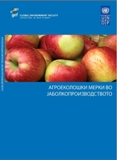Governance
Three countries, one future
Established in 2000, the trilateral Prespa Park is the first transboundary protected area in the Balkans, preserving fragile ecosystems and tending to the wellbeing of its inhabitants.
Comprising of two lakes and their surroundings in Albania, The Former Yugoslav Republic of Macedonia and Greece, the Prespa Park sets an example for neighbourly cooperation for the protection of biodiversity and of natural and cultural resources. However, it still has a way to go until it reaches full institutional maturation and – consequently – increased efficiency in managing sustainable development in the Prespa Lakes Basin.
Over the last two decades the global number of transboundary protected areas (TBPA) has gradually increased from 59 in 1980s, to around 200, covering a total of 4,6 millions hectares on all five continents.
There is no recipe for this: Although transboundary protected areas (TBPA) are the global trend in efforts to protect the planet’s natural resources, the forms in which states choose to cooperate to achieve this vary. This process is often complicated by differing political, institutional and socio-economic circumstances in different states. The most common first step in planning a transboundary protected area is starting talks between governments that eventually lead to the signing of a binding "TBPA Agreement", with enforceable provisions.
Duty to cooperate
Whichever the form that suits best the involved parties, it is based on their obligation to cooperate for the protection of the environment, stemming from the International Law. All three countries have ratified most of the international treaties relevant for the protection of Prespa Lakes Basin biodiversity, ecosystems and cultural heritage:
In addition to that, a special role is played by the European Union (EU) policies, since Greece is member country, and Albania and The Former Yugoslav Republic of Macedonia are aspiring members in the process of adjusting their legal systems to Aquis Communitaire. The relevant EU Directives are:
-
Directive 79/409/EEC on the protection of birds;
-
Directive 92/43/EEC on the conservation of natural habitats and wild flora and fauna (Habitats/ NATURA 2000 Directive); and
-
Directive 2000/60/EC (Water Framework Directive).
Towards the Prespa Park
Four national parks and several international protected areas lie
within the Prespa Lakes Basin, in the three countries that share its
waters, biodiversity and a common future.
Pelister National Park (The Former Yugoslav
Republic of Macedonia) is the oldest protected area in the basin,
proclaimed in 1948 to protect some 10,000 ha of mountainous ecosystems,
including the primary habitat of the Pinus
peuce, known as Macedonian Pine or Balkan Pine. In
1958 Galicica National Park was proclaimed to protect
25,000 ha of woodland and the exceptionaly rich biodiversity. The
country’s part of Macro Prespa has been designated a Monument
of Nature in 1977.
Prespa National Forest (PNF) in Greece was designated in 1974 covering 19,470 ha, including Micro Prespa Lake and a Wildlife Refuge - Sfika. In 1975 it was declared a Landscape of exceptional beauty, and designated a Wetland of International Importance under the Ramsar Convention on Wetlands.
The efforts to protect natural habitats pick up in the 1990s: Strictly Protected Ornithorogical Reserve Ezerani together with the rest of the Macedonian part of Prespa lake have been designated a Ramsar site, i.e. a Wetland of International Importance in 1995. In Albania, Prespa National Park was established in 1999.
As stated in the Declaration on the Creation of the Prespa Park and the Environmental Protection and Sustainable Development of the Prespa Lakes and their Surroundings, the goals of the trilateral cooperation are to:
a) maintain and protect the unique ecological values of the ‘Prespa Park’,
b) prevent and/or reverse the causes of its habitat degradation,
c) explore appropriate management methods for the sustain-able use of the Prespa Lakes water,
d) to spare no efforts so that the ‘Prespa Park’ becomes and remains a model of its kind as well as an additional reference to the peaceful collaboration among our countries”.
Under the EEC/EU policies the whole catchment basin on the Greek side has been included in the Europe-wide network of protected areas - NATURA 2000.
In 1999 the Greek Society for the Protection of Prespa was honoured with the Ramsar Convention Award for its pioneer conservation work in Micro Prespa.
The establishment of a Transboundary Protected Area provides a way to effectively coordinate management over a whole region. It also decreases the possibility that a positive measure on one side will be cancelled out by inaction or a destructive or unsustainable activity on the other side. A typical example of this is the preservation and management of the lakes water’s quality and quantity, and fauna that cross state boundaries. Joint research and monitoring programmes eliminate duplication, standardise methodologies, and share expensive equipment. Basin-wide monitoring, in particular, acquires extremely high added value.
Decades-long efforts to draw attention to the need for the protection of Prespa was crowned on the World Wetlands Day, February 2, 2000, when the three Prime Ministers jointly signed the Prespa Park Declaration.
With it, they also issued a wide mandate for “enhanced co-operation among competent authorities in our countries with regard to environmental matters”, and especially consideration of joint actions.
Prespa Park Coordination Committee
The Prespa Park Coordination Committee (PPCC) is a ten-member body representing governments, local authorities and environmental non-governmental organisations from the three countries, and one ex-officio member from Ramsar/MedWet. The work of the PPCC is supported by its Secretariat, seated in Aghios Germanos, Greece. The PPCC ensures stakeholder participation in the planning of joint activities in the area.
One of its main early accomplishments was the completion of the Strategic Action Plan for the Sustainable Development of the Prespa Park, a strategic document which lays down a joint vision for the transboundary basin, identifies the main management issues and aims to guide future activities for the region. The PPCC has initiated and overviews the progress of several transboundary initiatives, including the development of a Transboundary Monitoring System and the establishment of a Transboundary Water Management Working Group.




